The Goldsmiths' Mini Museum
Brasov Citadel, Golden Guild, Bastion, Schuller Villa
1203
The construction of Brașov begins
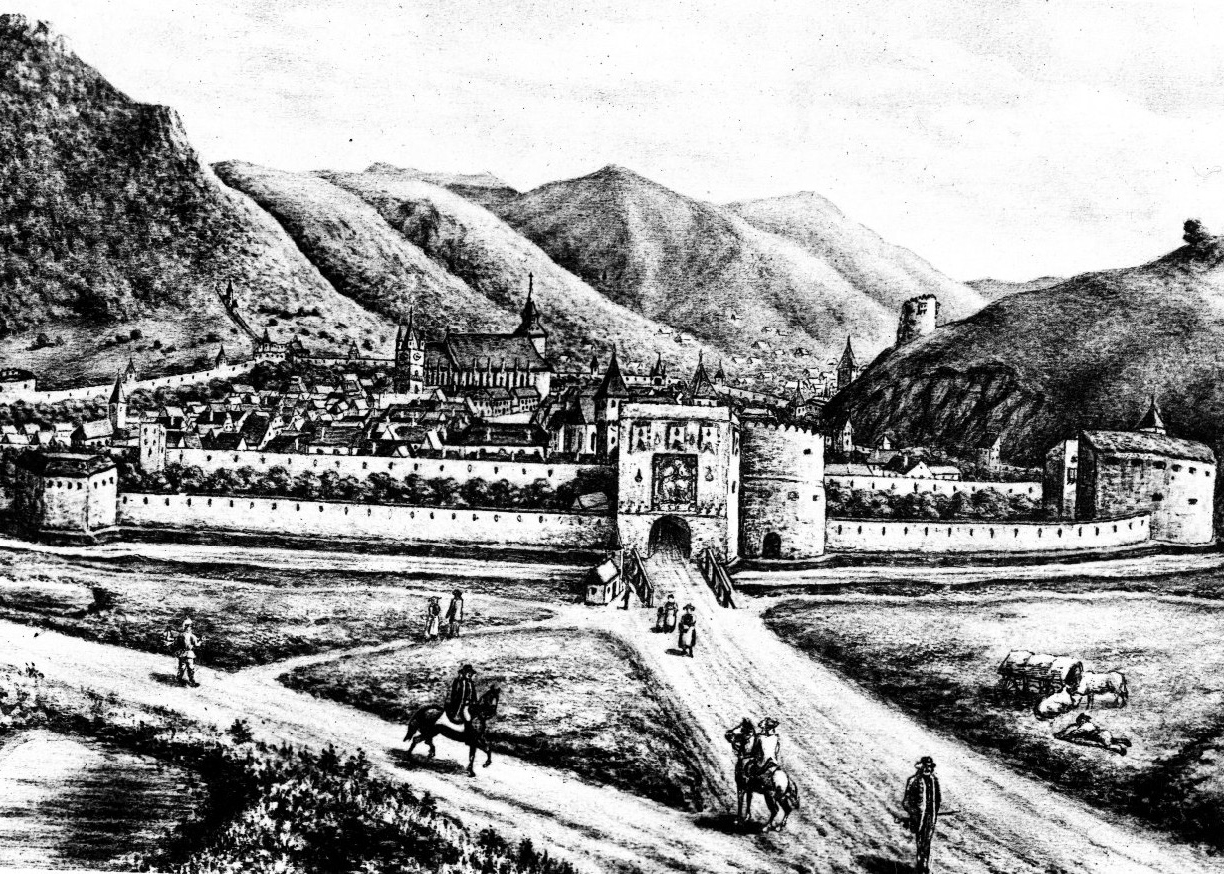
The construction of Brașov began with the construction of the fortress, strategically erected on a
hill overlooking the city to protect it from enemy attacks. The fortress was followed by the
construction of the city walls, built to preserve the city and defend its inhabitants.
Medieval Brașov consisted of the Brașov Citadel and the three suburbs outside the walls of the
"Citadel": Șchei, inhabited by Romanians; Brașovechi, mostly inhabited by Saxon peasants and
Blumăna, mostly inhabited by Hungarians.
The settlement benefited from a special urban architecture, with inner belts of walls in a square
plan, a new defense formula, preceding the period of firearms. Teutonic Knights contributed to the
founding of Brașov in 1211 when they defended the border of the Hungarian Kingdom, and the city
became one of the seven fortresses (Siebenburgen) after the Saxons were later colonized.
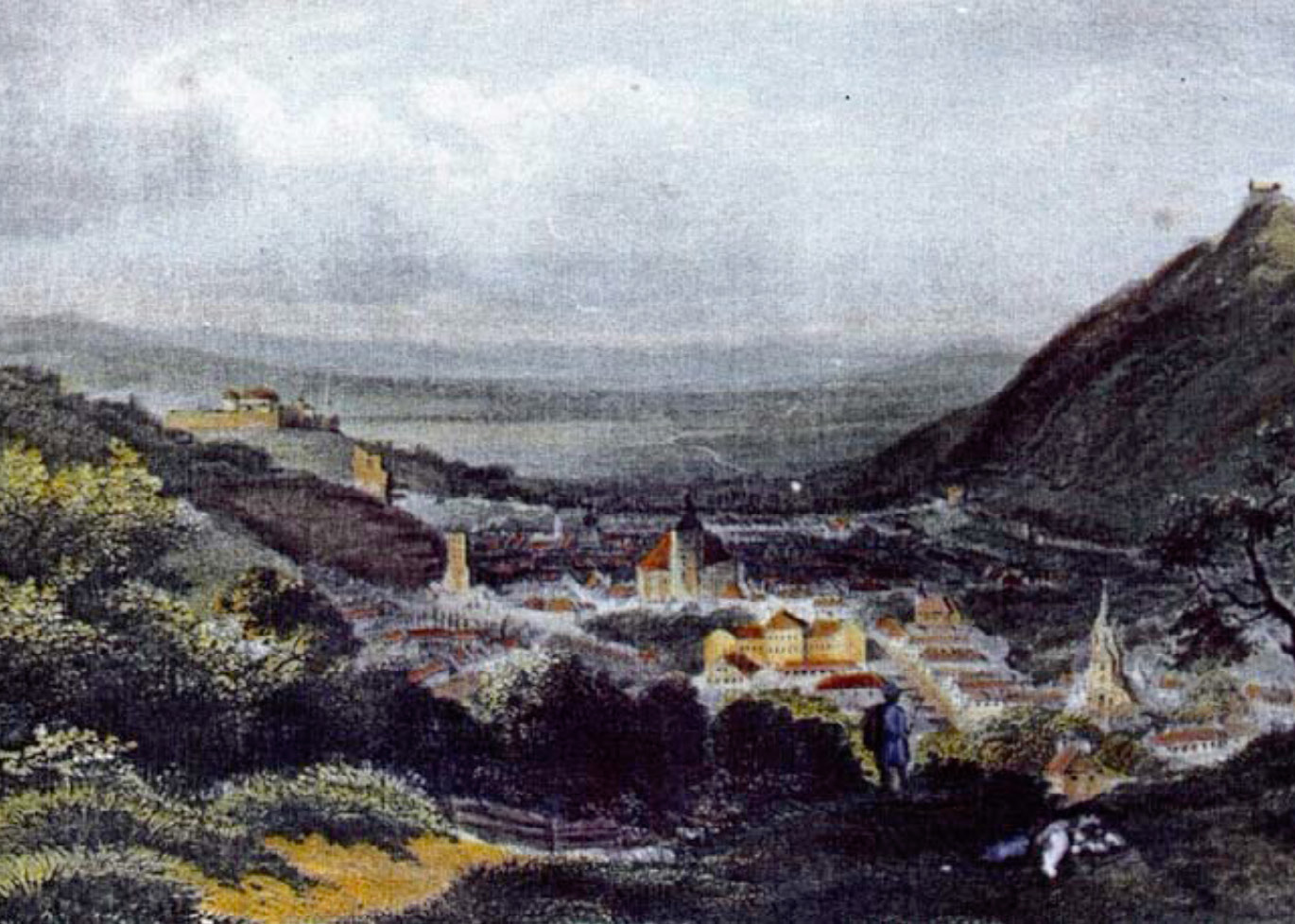
The excavated testimonies indicate the presence of large Neolithic cultures (the famous
Noua, Tei, Schnekenberg culture) on today's territory of Brasov.
Later, archaeological discoveries attested to the existence of Dacian temples in the Pietrele lui Solomon area, of food warehouses in Piața Sfatului, of settlements and fortresses on Melcilor Hill and in the Valea Cetății neighborhood.
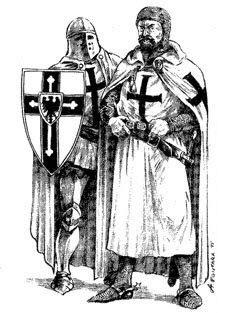
Romanian Identity website
... 8 years later
The Teutonic Knights - a German Catholic religious order, began to rule over „Țara Bârsei”
(today's Brasov County)
1235
Today's Brasov was known as Corona
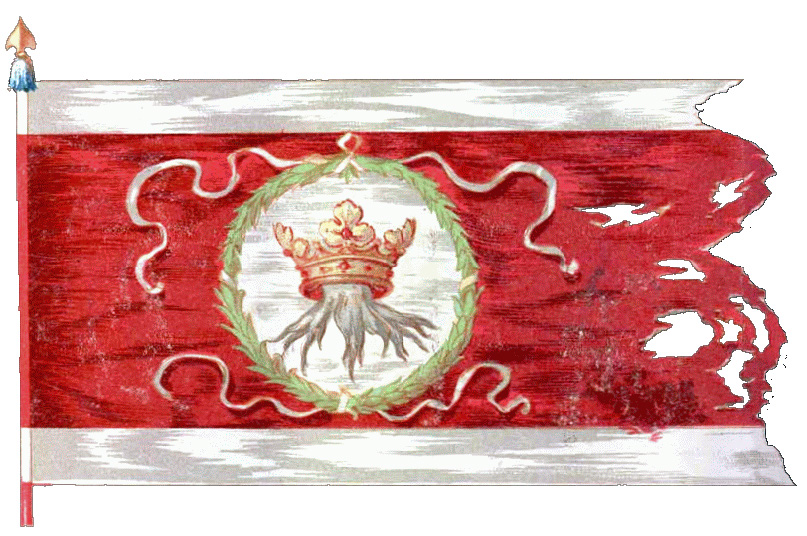
The Citadel is known as CORONA ( 1235), BARASU ( 1252), BRASU ( 1288), names related to the colonization of the Burzenland with a German population from the region of Flanders and Moesia.
In 1353, the coat of arms of Brasov illustrated a crown with fleurons in the shape of a lily, accompanied by a lily flower. From 1429, the tree trunk under the crown also appeared.
The current coat of arms of the municipality of Brasov, contains a blue shield on which appears a tree trunk with 13 silver roots - the 13 communes of the Șara Barsa - which emerge from a golden crown with three lobes - the symbol of power. The shield is stamped by a silver mural crown of seven towers - the specific insignia for county seat municipalities.
The overall meaning of the coat of arms is "Wisdom and Power forever rule the Citadel".
Braşov's coat of arms has a history of over 1,000 years, when the current city was just a village. In those days, instead of the present Historical Center, there was only a huge forest.
It is said that the Hungarian King Solomon (1063-1074) was fighting a people of invaders, the Cumans, who used to conquer territories and kill anyone who stood in their way.
The legend says that King Solomon was chased by the invaders to Braşov where he hid in the forest. In order not to be recognized, he took off his crown and placed it on the trunk of a tree. He was no longer recognized by the Cumans, who believed that the king had fallen into the abyss and died. That's how he managed to escape and run away with the riches he had on him. He ran to a cave where he took refuge, in the area known today as Solomon's Stones.
Hundreds of years later, a peasant who went to the forest to collect firewood found the crown, on the site where the Council House now stands, and took it to the Black Church for safekeeping.
That's how Brasov became in german "Kronstadt", "The City of The Crown".
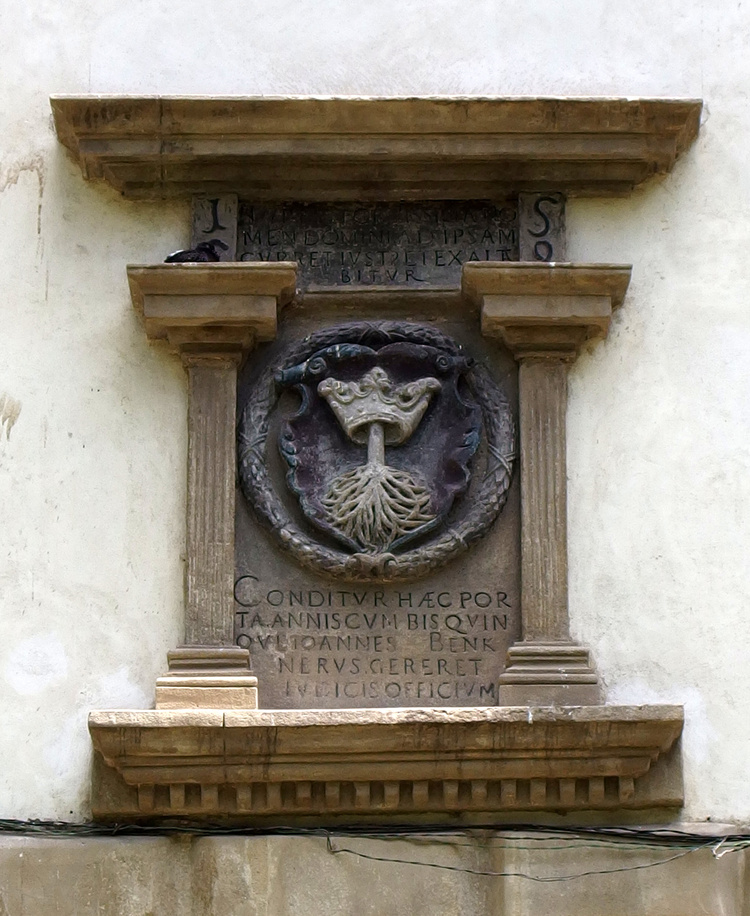
photo: Mark Ahsmann
... nowadays
Brasov's coat of arms can be admired on the Catherine's Gate, a monument that still exists today!
1427
Brasov Citadel is ready!
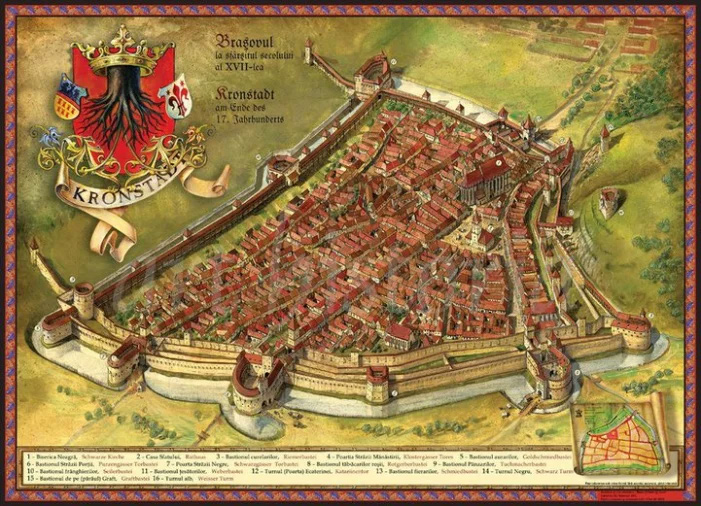
The city was surrounded by walls and defense towers, thus becoming a famous fortification - the Citadel.
This represented a fortified place, the inhabitants of Brașovechi, Blumana and Schei neighbourhoods located outside the fortress walls, being protected within it.
The access to the Citadel was through four gates: Catherine's Gate, on the southwest side towards Schei, Custom's Gate/Monastery's Gate, on the north side towards Brasovechi, the Main Gate (Coppersmiths' Gate) and Black Street's Gate, in the northeastern part towards Blumana.

Brasov Citadel also had four external towers, that were used as watchtowers. Out of these, only two have survived to this day: the White Tower and the Black Tower. In the citadel, the constructions were erected according to some restrictions imposed by the geographical conditions in which the city was located. Here, as in the other Saxon districts, the houses "supported each other", being stuck together.

... 595 years later
You're here!
Radisson Blu Aurum Brasov is open for guests!
1511
24 January is certified the Guild of Goldsmiths
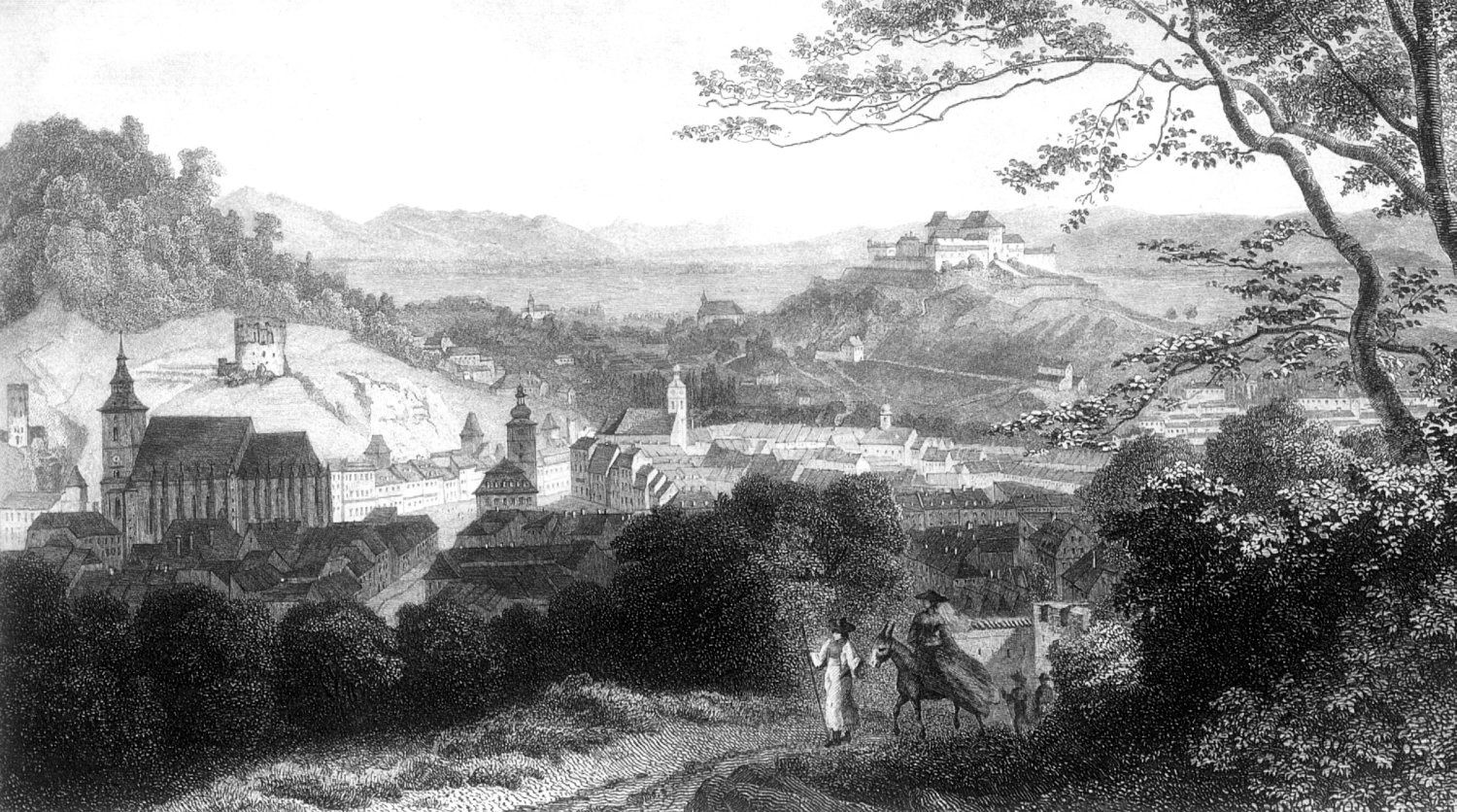
The privileged geographical position contributed enormously to the development of the city that we see today.
Being an autonomous settlement, trade and craft activities allowed people to be organised into guilds. Organizations that serve the purpose of craftsmen of the same type, by defending common interests. Guilds of goldsmiths and silversmiths are mentioned in the 16th century.
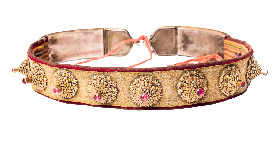
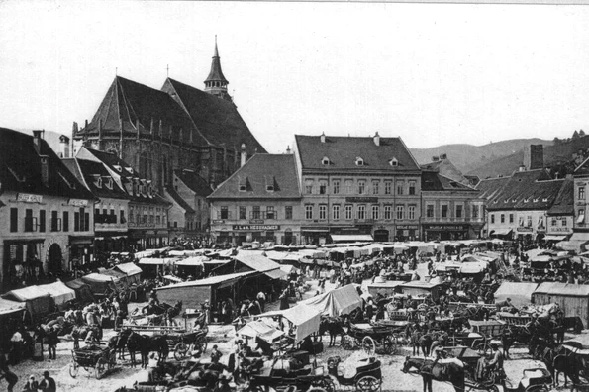
During that period, the fair in Brasov's Council Square (Piata Sfatului) gathered traders and craftsmen from Transylvania, Wallachia, Moldova - autonomous states, in the anti-Ottoman revolts.
A creative community that generates an economic but also a social benefit, the types of barter, exchange and purchase, being unique to each merchant.
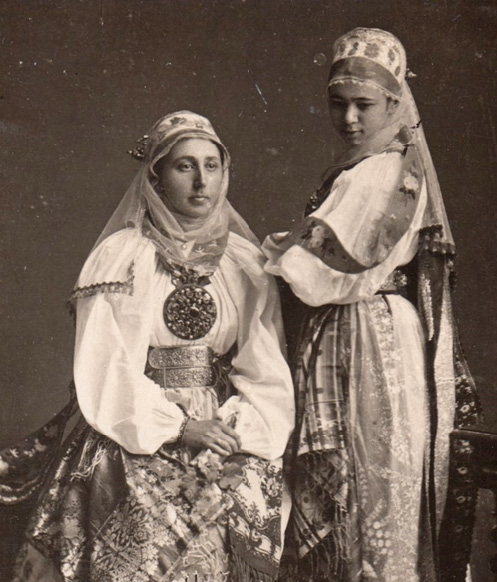
Collection of the Museum of Ethnography Brașov
Young Saxon women in traditional dress (19th century)
• "Gürtel" - metal cord
• "Heftel" - the belt worn on the chest
1556
Goldsmiths's blazon from Brasov is homologated
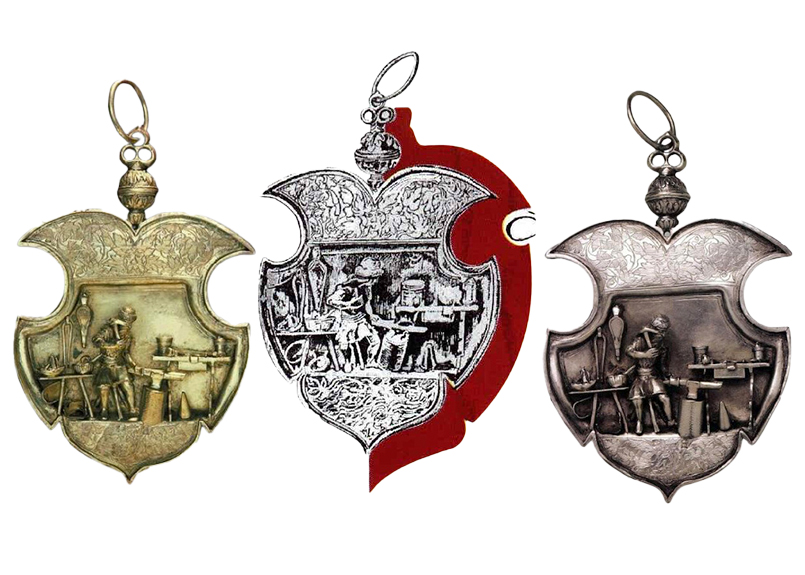
The Goldsmiths' Guild experienced a long and favorable flowering through the objects made for the needs of churches of different rites existing in Brașov. For a long time, they were endowed with liturgical objects, including candlesticks, chalices, candles, baptismal font, crosses, icons for icons, but also books, these not only being religious.
They are joined by ornaments, clothing accessories, including the famous belts with tassels, cufflinks, but also household items.
Regardless of the type of objects produced by Brașov goldsmiths, they are made in the artistic style of the era, combining characteristics of the Renaissance with those of the Baroque. To this is added the Romanian specificity because many are made at the order of the rulers, the boyars from the Romanian countries, their artistic achievement illustrating a visible influence that will be known as the Brancovean style.

The seal was created during the reorganization of the guild (between 1511 and 1550). On the seal appears the inscription S * M * ABRI * KORONEN CIS, meaning Sanctus Martinus Aurifabri Coronenses and an image of the patron saint of the goldsmiths' guild, Saint Martin of Tours. This is also the patron saint of the church of Saint Martin in Brașov, which represents one of the oldest monuments in the city, the construction of the church having been started since 1235.

St. Martin Church în Braşov (2004, Ágoston Berecz)
Saint Martin's Church in Brașov
One of the oldest monuments in Brașov, it was
originally a Roman Catholic church and had St.
Martin de Tours as its patron.
1639
The 5-sided hexagonal Bastion is being built

In the middle of the northern wall of the Citadel, between the Porta Street Gate and the Monastery Gate, is the Goldsmiths' Bastion, built between 1639 and 1641. Although it appears circular in some images, it had the shape of an irregular hexagon, which emerged from the line of the enclosure wall with five sides. On the middle side it was decorated with the Coat of Arms of Brașov and with a stone inscription indicating the years of its construction (1639-1641) and the names of the primary judges of Brașov, Christian Hirscher and Michael Goldschmidt.
The bastion was demolished in 1886, and in its place, in 1888-1889, the Royal State Higher School was built, today the T building of "Transylvania" University.
The rapid enrichment of the goldsmiths is also reflected by their moving to a new bastion of the fortress, built by them in the century. the 17th on the line that unites Strada Portii (today Republic) with that of Customs (Muresenilor). Moreover, the wellbeing is proven by the fact that, in addition to the current fiscal or war obligations, the goldsmiths made substantial gifts to the princes, the nobles (for example, at the wedding of Ioan Zapolya they sent 455 florins, a more than substantial amount).
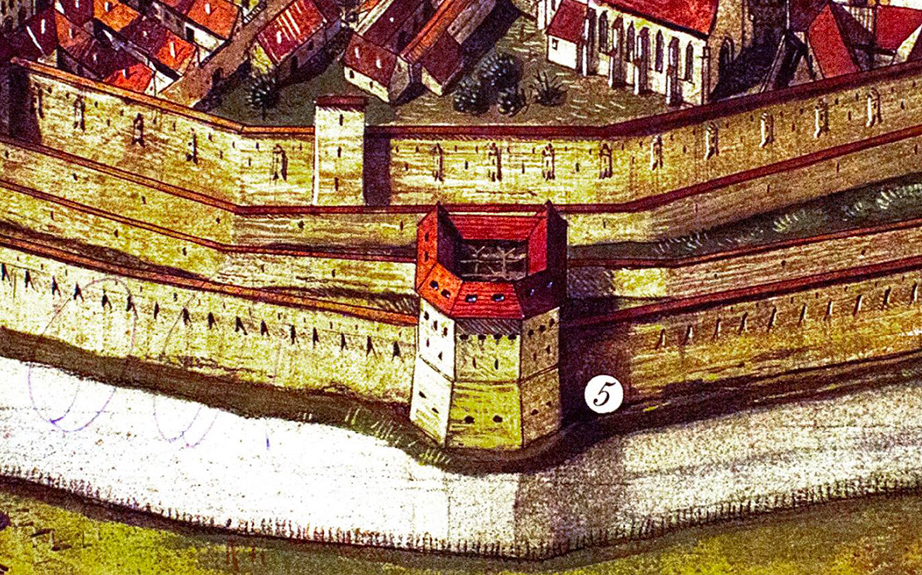
The rapid enrichment of the goldsmiths is also reflected by their moving to a new bastion of the fortress, built by them in the century. the 17th on the line that unites Strada Portii (today Republic) with that of Customs (Muresenilor). Moreover, the wellbeing is proven by the fact that, in addition to the current fiscal or war obligations, the goldsmiths made substantial gifts to the princes, the nobles (for example, at the wedding of Ioan Zapolya they sent 455 florins, a more than substantial amount).
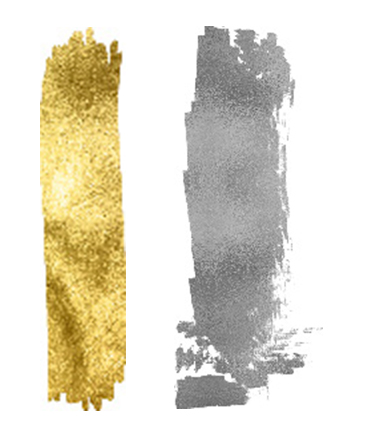
Man's connection with precious metals
• Stone, iron = strength, will
• Gold, silver = spirit, subtlety, mastery
• Gold = deity, sun, wisdom
Objects made by goldsmiths
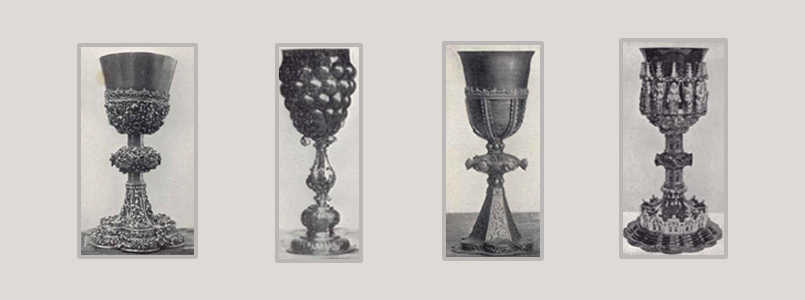
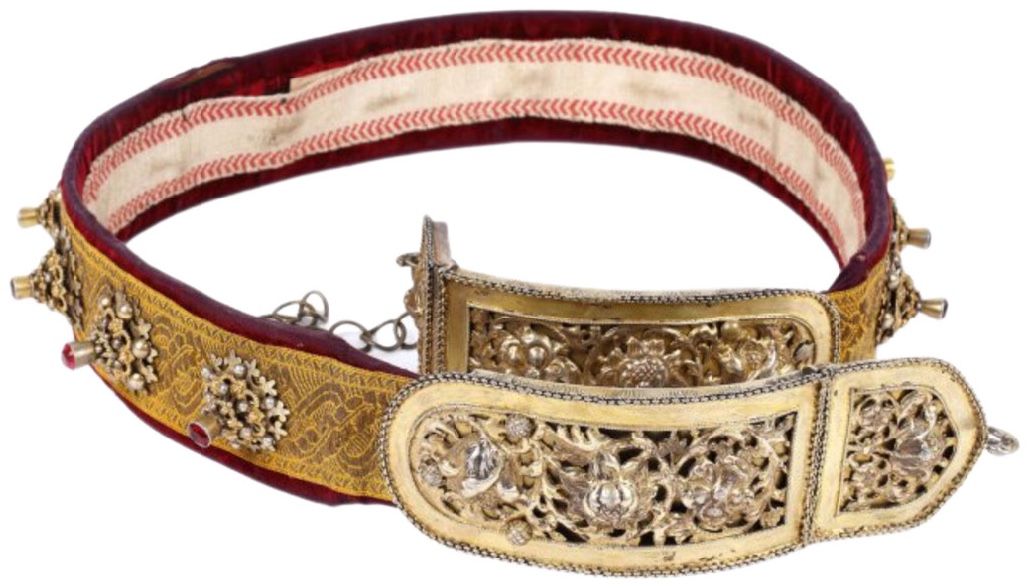
Saxon gilded silver cord,
decorated with
Brancovenesc motifs,
craftsman Eduard Schnell,
Brașov, approx. 1848,
extremely rare
The products made by the craftsmen of the MAY dynasty, objects of worship or of common use, are made of solid silver and gilded silver. They have different shapes, ornaments with geometric figures, zoomorphic motifs, plants, biblical scenes, landscapes.
For example, silver glasses usually consist of two pieces, the cup and the foot, on which, chiseled or hammered, there are oval medallions, worked in relief or with scenes reproducing the movement of animals (deer, horses). They have their own, characteristic style in which there are cut-out floral decorations representing wreaths, open peonies, lobes of some flowers, all specific to the Brancovenesc style.
They are also inspired by folk art using the blooming tulip, but also other floral elements rendered down to the smallest details (pistil flowers, leaves). These stylized motifs are of Greek origin, they are found in Byzantine and Oriental art and were transmitted to Romanian art.

Nature plays an important role in their works, hunting scenes, with animals, plants lead to the combination of traditional local elements with those of Wallachia. The new motifs were introduced into the Brancovenesc style, from now on being part of it, bringing it a new shine, while also introducing a secular note in the ornamentation of cult objects.
1896
Schuller Villa is being built
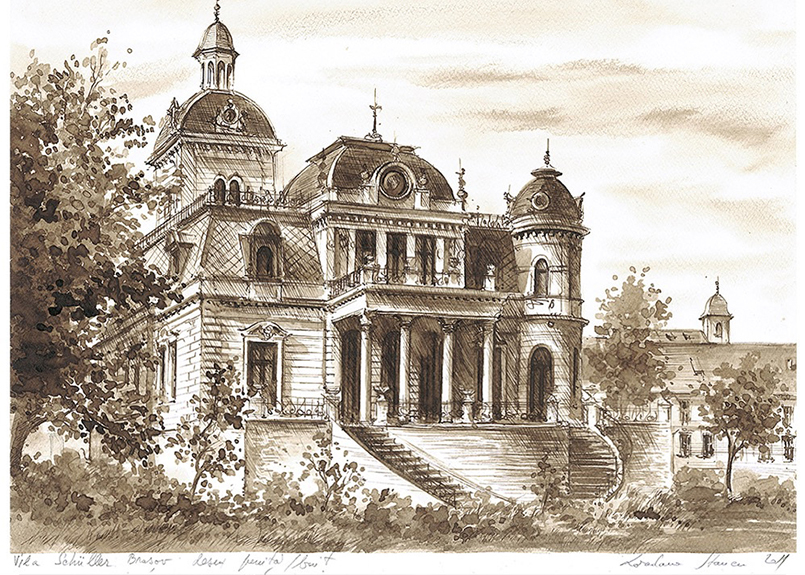
At the end of the 19th century, in 1896, this romantic house was located exactly where you are now! In front of the Nicolae Titulescu Park in Braşov (the Central Park, next to which the Brașov City Hall is located), Vila Schuller attracted all the eyes of passers-by. Built by the pharmacist Friedrich Schuller, the villa had a direct view of Tâmpa and the Black Church, being one of the tallest "civilian" buildings of the time.
The building impresses through the combination of architectural styles, having elements specific to the Renaissance, Baroque, Neoclassical and Neogothic styles. The facade was ornamented with carved details and floral decorations, and the interior was richly decorated with frescoes, stucco and eclectic stained glass.
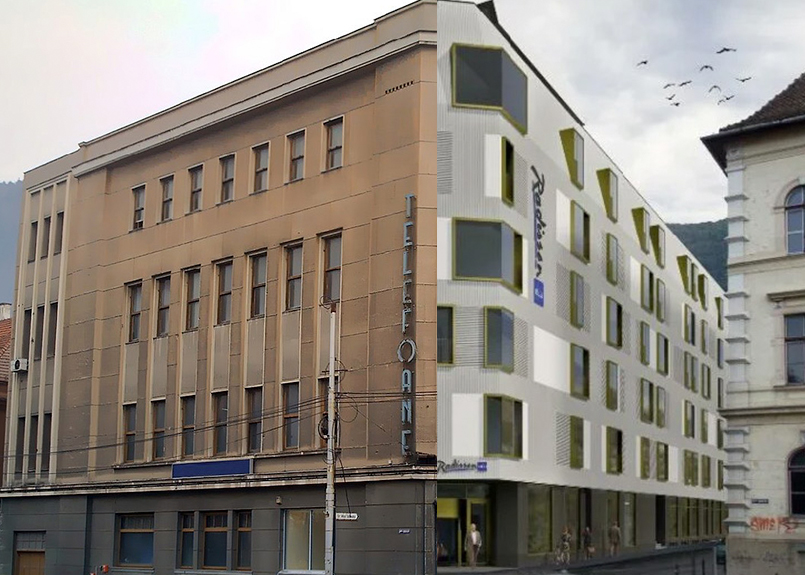
The Romanian Telephone Company (SART) buys a part of Villa Schuller and builds The Palace of Telephones Brasov, a building that will house a Rotary-type automatic telephone exchange with a capacity of 3,000 lines. In 1939 the building was inaugurated, which was then nationalized by the communists, in 1962 Villa Schuller was demolished due to the extension of The Telephone Palace, it became the property of Telekom and was sold in 2015.
Thus, the two buildings functioned together for 23 years!
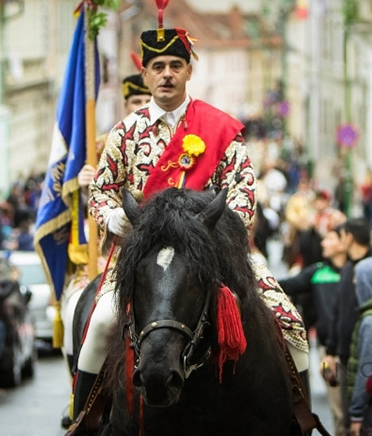
Inquam Photos
... 12 years later
The Red Juni were established. The Junilor tradition is inherited from the first inhabitants of Brașov, during which parades and activities are held together with the spectators.
1947 - 1989
Communism in Brasov
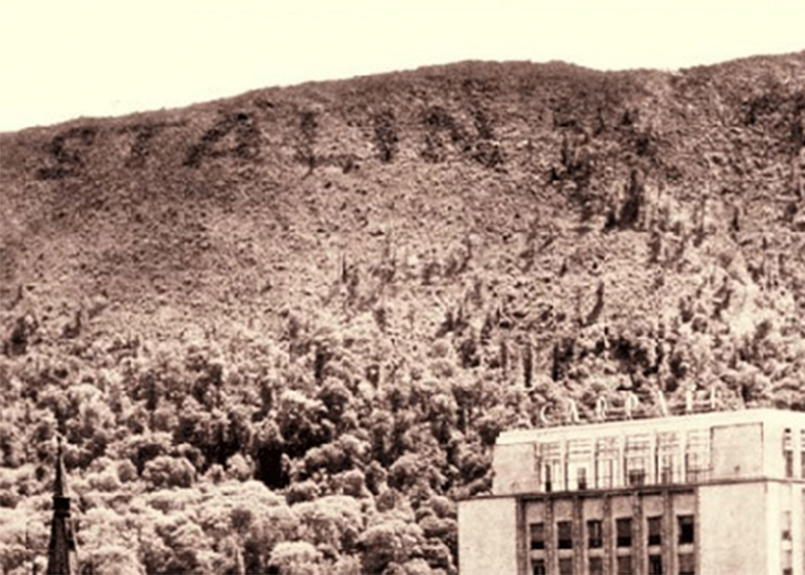
The establishment of the communist regime in Romania and the first years of the proletarian dictatorship also meant the renaming of almost 12,000 towns, streets, factories and factories in Romania after the "fathers" of world communism. In Romanian toponymy during the communist period, the most important change took place in 1950, by changing the name of Braşov to "Stalin City".
The Council Square in Brașov changes its name to the "23 August" Square, and the Central Park becomes the "Romanian-Soviet Friendship Park". Factories also receive names taken from the language of propaganda: "Red Flag", "Red Partisan", "Dezrobierea". Communist Brasov owned factories for trucks, tractors, bearings, military industry, chemical industry, clothing and footwear, cosmetics, food industry, etc. Each industrial platform led to the construction of housing blocks for newly arrived workers.
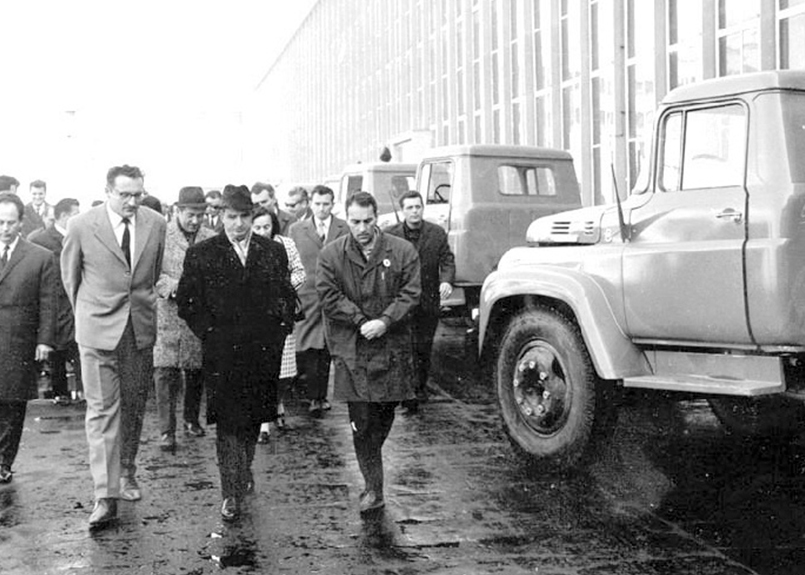
During the 25 years in which he was in charge of Romania, Nicolae Ceauşescu visited Brasov numerous times. The people forced to take to the streets with placards and cheer him and the crowded bathrooms filled him with energy, being convinced that he is loved by the people.
The dictator knew the ”town at the foot of Tampa Mountain” quite well. Here he had asserted himself for the first time as a hardened communist, in 1936, while he was being tried for agitation and propaganda against the security of the state. Also here, he had been accepted into the ranks of the Communist Party, while he was incarcerated at the Central Prison, the current building of the Patrimony. In the last years of his reign, however, Brasov caused him a lot of trouble.
In 1987, called by the first secretary Petre Preoteasa, he ordered water cannons to be used on the revolted workers who had attacked the Party County building.